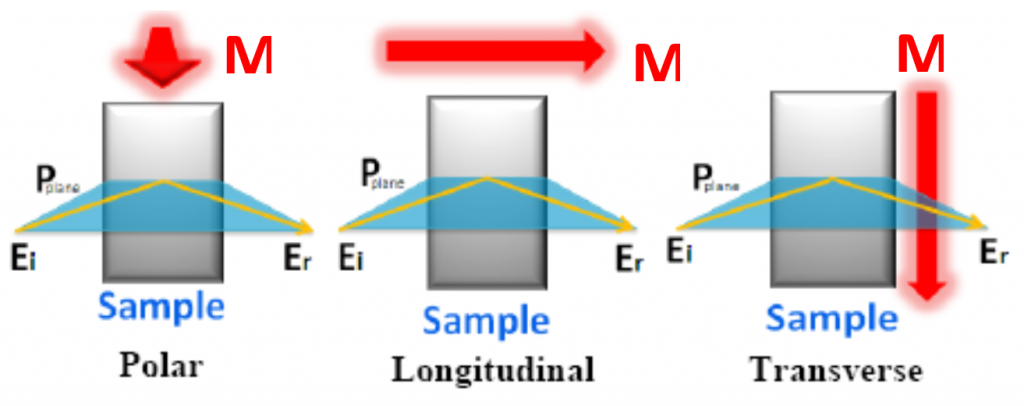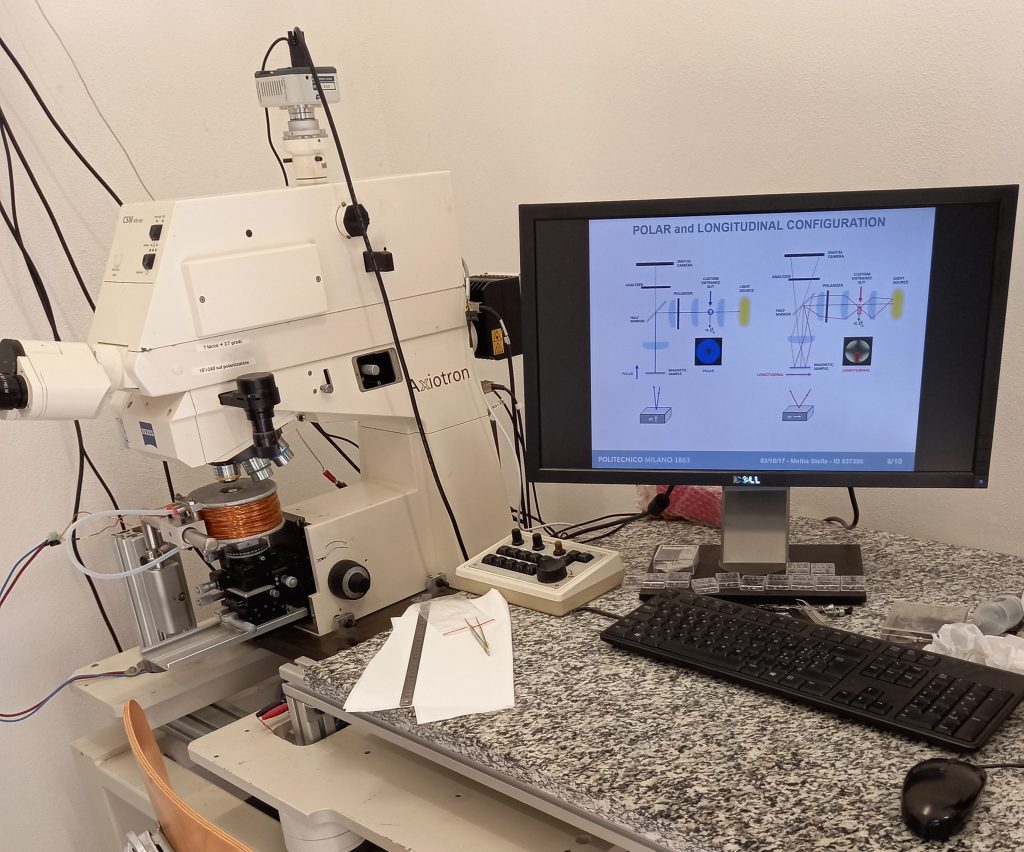Contact persons: Christian Rinaldi, Edoardo Albisetti
Access: NaBiS group and collaborators
Location: Nanomagnetism Lab – via G. Colombo 81, 20133 Milano (Italy)
Description:
Magneto-Optical Kerr Effect (MOKE) is a powerful technique that enables to study the magnetic properties of samples by using polarized light. When linearly polarized light impinges on a magnetic sample, its polarization is modified and the beam becomes elliptical, with a rotation of the major axis proportional to the sample’s magnetization vector (M). From the analysis of helicity and rotation versus the external magnetic field (H), it is possible obtain the magnetization curve of the sample (M vs H). H and M can be applied and measured, respectively, along different directions (e.g. in-plane and out-of-plane), thus allowing for a full 3D magnetic characterization of thin films.
Kerr microscopy is an optical-microscopy-based technique used for imaging the magnetic domain structure as a function of the external magnetic field. In Kerr microscopy, the Magneto-Optical-Kerr-Effect (MOKE) is used for acquiring magnetic contrast images with high spatial resolution limited by the diffraction of light. The images are acquired using a CCD camera connected to the Matlab software. Depending on the specific configuration, it is possible to measure the in plane component of the magnetization (longitudinal or transverse configuration) or the out-of-plane component.
Measurement Options:
- -Kerr Microscopy as a function of the external field, out-of-plane direction, in-plane direction.
- -Kerr Microscopy in combination with electrical current injection, for studying the electrical switching of magnetic domains.
Specifications:
- Polar (out-of-plane magnetization) longitudinal and tranverse (in-plane magnetization) configurations can be used.
- Spatial resolution limited to about 250 nm / px.
- Sample dimension: the sample should fit between the poles of the magnet and with the excursion of the stage. Max 1 cm x 1 cm samples are confortable.
- Light source. High power stabilized LED white light source.


